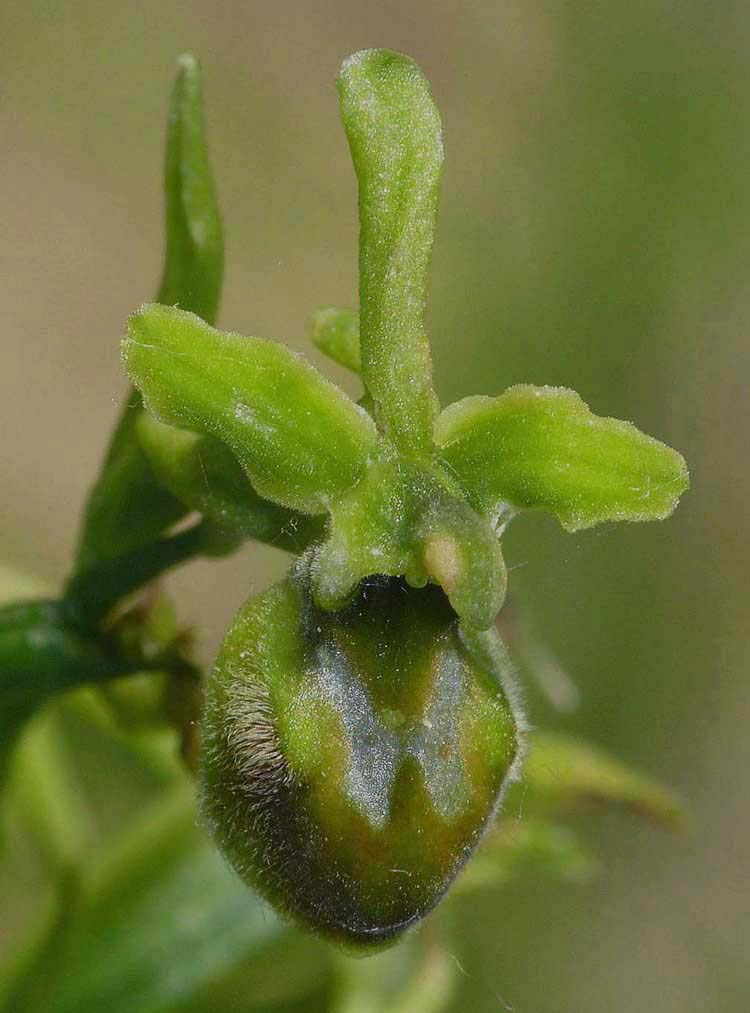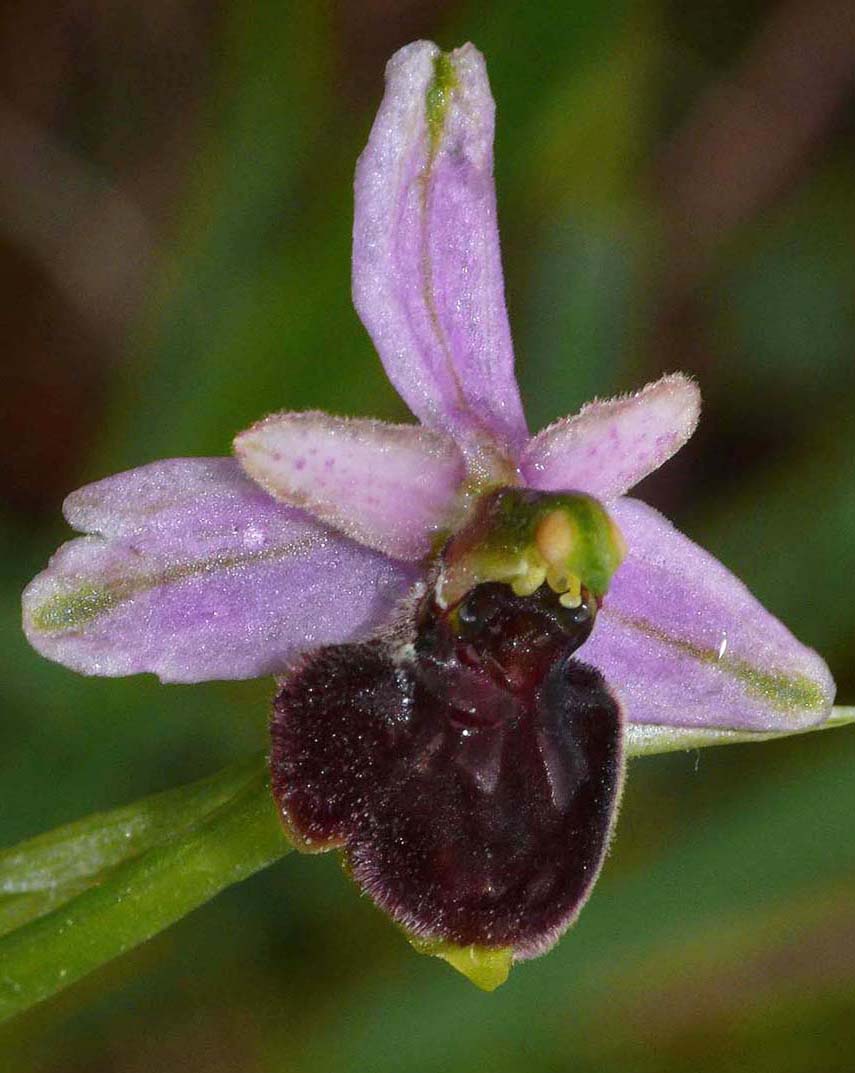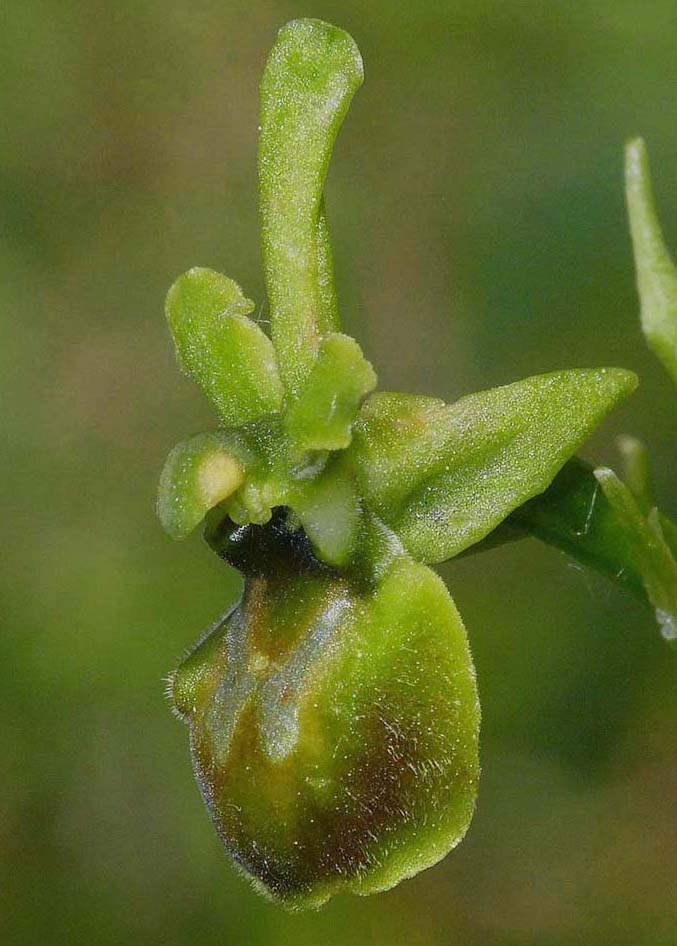This
is essentially a French orchid although it occurs sparingly in the
neighbouring countries of Spain and Italy and perhaps as far north as
southern Germany. O. araneola is one of eleven members of
the O. incubacea group which are spread fairly widely around the western
Mediterranean reaching as far east as the former Yugoslavia.
It can be fairly common in its favoured locations but is unaccountably absent from large, seemingly suitable areas. Distribution is however poorly understood and this is perhaps unsurprising given that its known range overlaps with several similar species. Not least of the species with which it may be confused is O. sphegodes which occurs throughout its range and for which it can easily be mistaken, particularly where the plants are weaker than normal. Generally however, O. araneola is a smaller flower with a lip that appears disproportionate in scale to the stigmatic cavity and sepals. Despite the size of the flowers the plant itself can be relatively tall and sturdy, growing up to 45cms with as many as 15 flowers.
A good area to seek this orchid out is the Vercors of southern France where it is at its most frequent and where it does not occur with many similar Ophrys. This therefore allows identification to be made with some confidence. The extremely similar O. virescens can create identification difficulties but is only very occasionally found in the far south of the National Park. Somewhat confusingly Bournerias describes a form of O. araneola from Corbieres that strongly resembles O. virescens, as if to suggest that other populations don't ? All the photographs are from the Vercors National Park, around Plan-de-Baix and date from mid May.
It can be fairly common in its favoured locations but is unaccountably absent from large, seemingly suitable areas. Distribution is however poorly understood and this is perhaps unsurprising given that its known range overlaps with several similar species. Not least of the species with which it may be confused is O. sphegodes which occurs throughout its range and for which it can easily be mistaken, particularly where the plants are weaker than normal. Generally however, O. araneola is a smaller flower with a lip that appears disproportionate in scale to the stigmatic cavity and sepals. Despite the size of the flowers the plant itself can be relatively tall and sturdy, growing up to 45cms with as many as 15 flowers.
A good area to seek this orchid out is the Vercors of southern France where it is at its most frequent and where it does not occur with many similar Ophrys. This therefore allows identification to be made with some confidence. The extremely similar O. virescens can create identification difficulties but is only very occasionally found in the far south of the National Park. Somewhat confusingly Bournerias describes a form of O. araneola from Corbieres that strongly resembles O. virescens, as if to suggest that other populations don't ? All the photographs are from the Vercors National Park, around Plan-de-Baix and date from mid May.
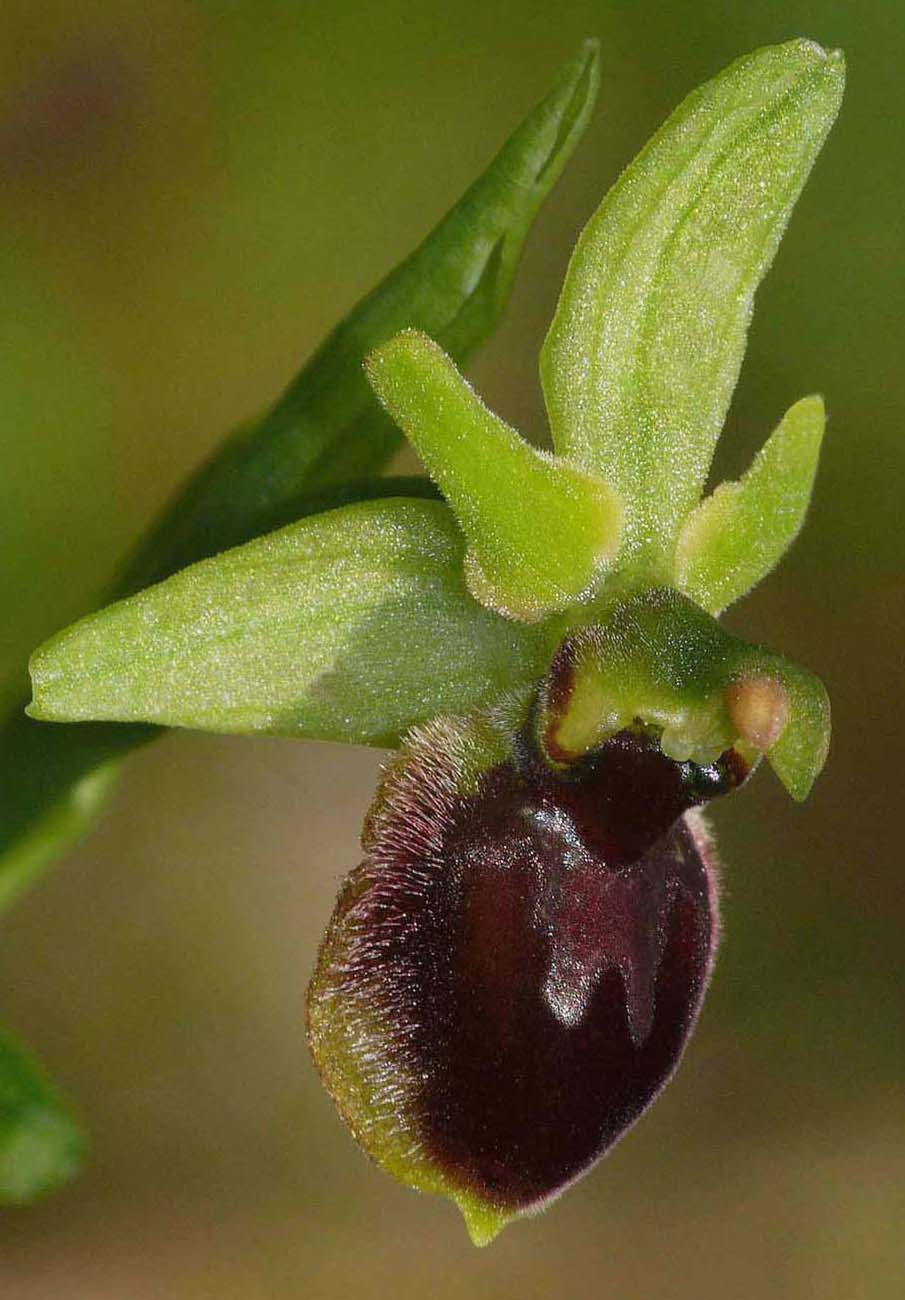
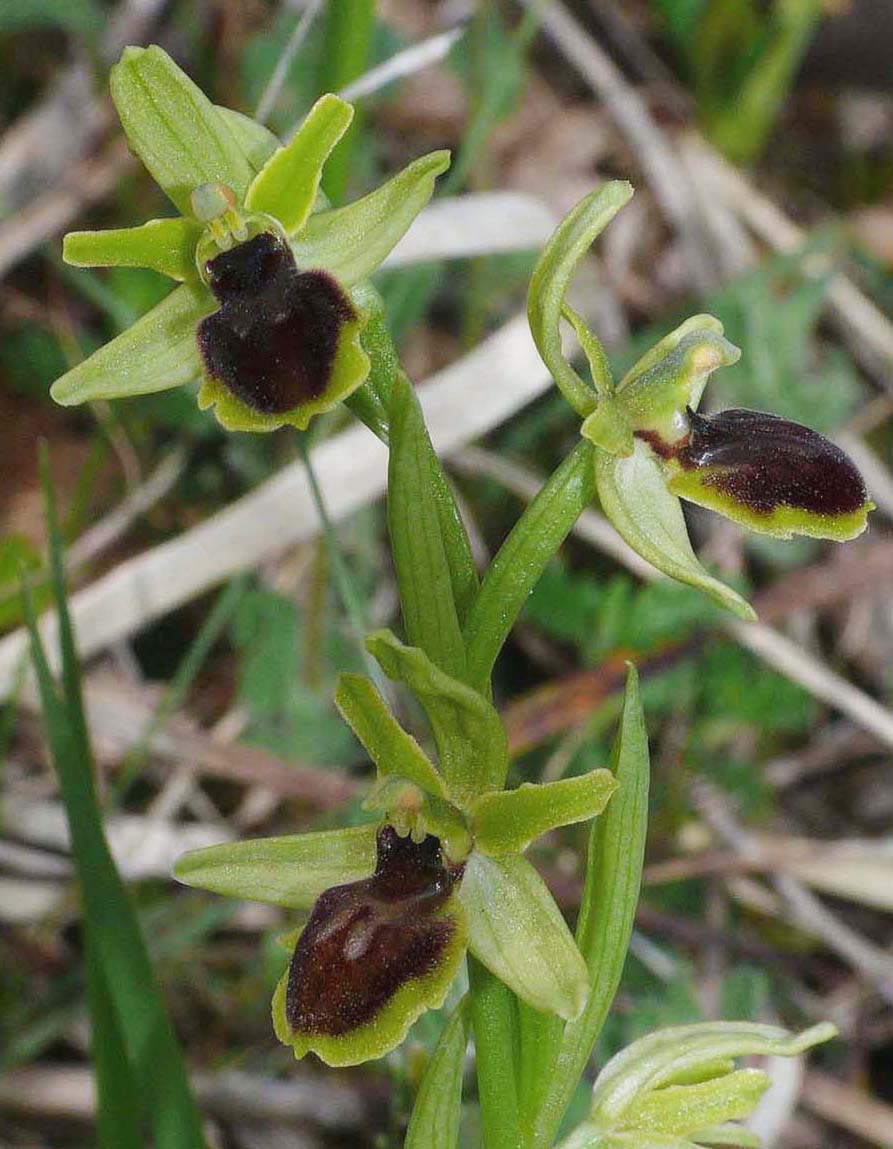
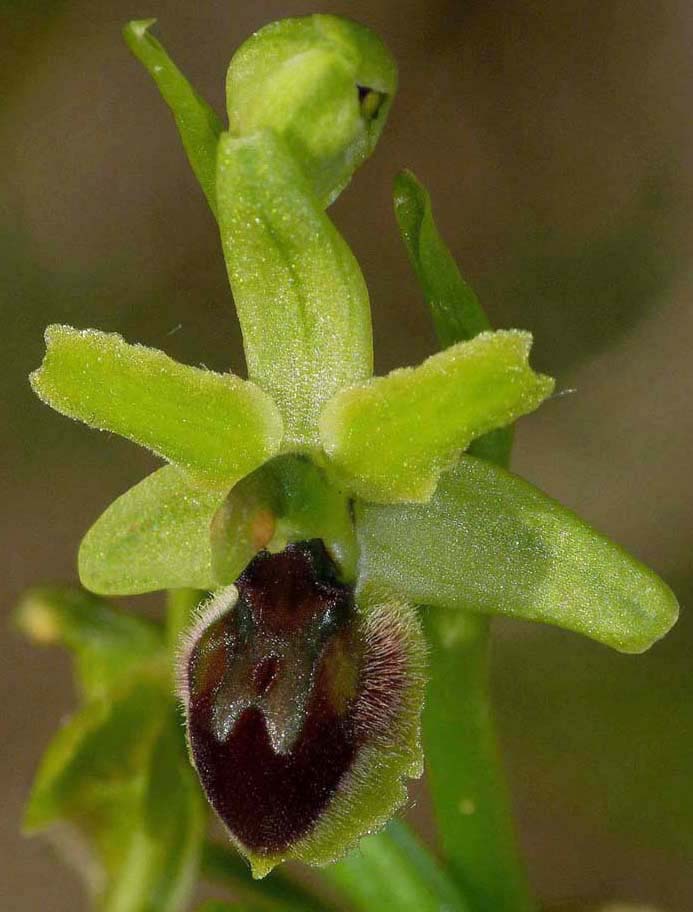
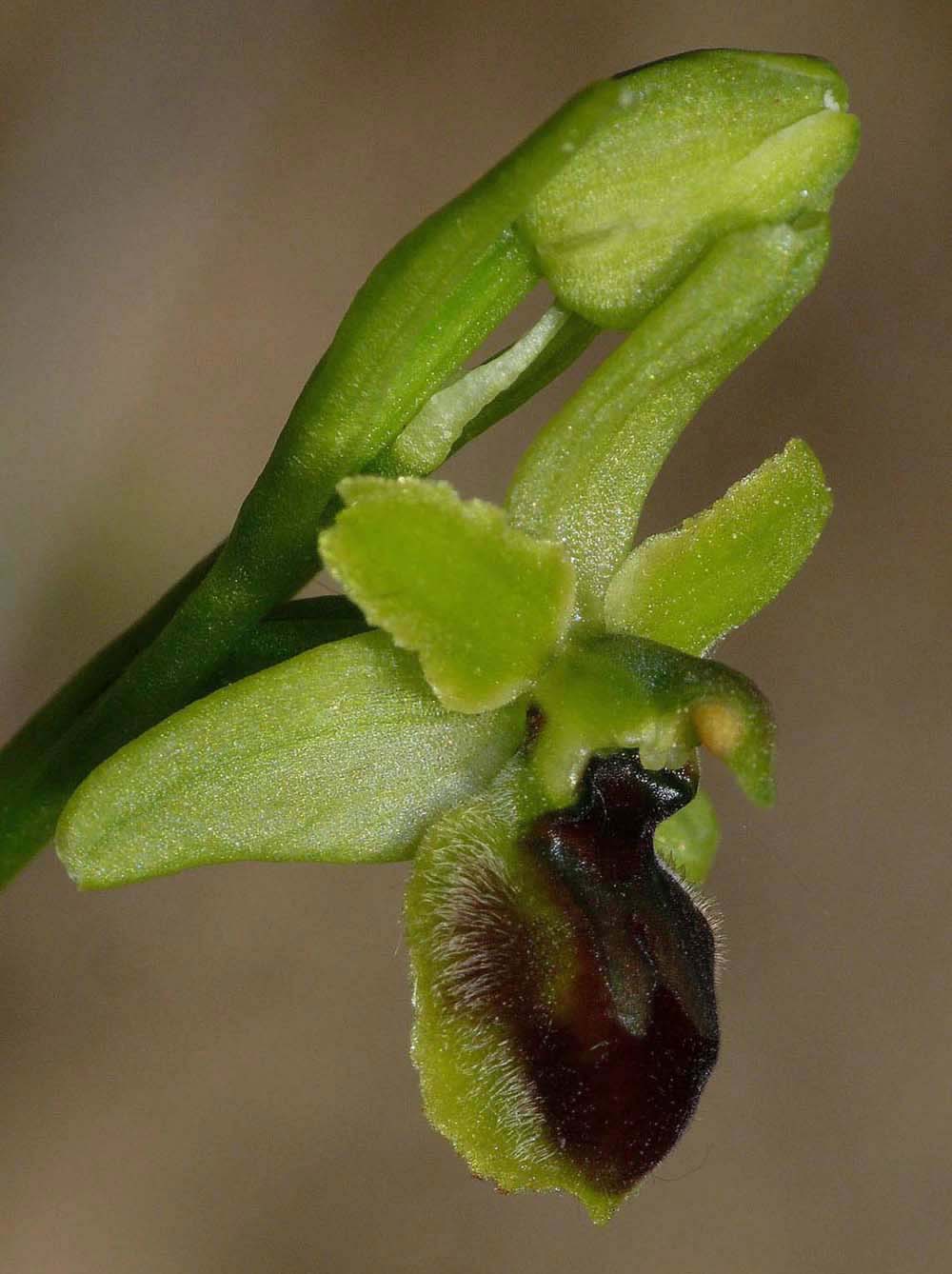
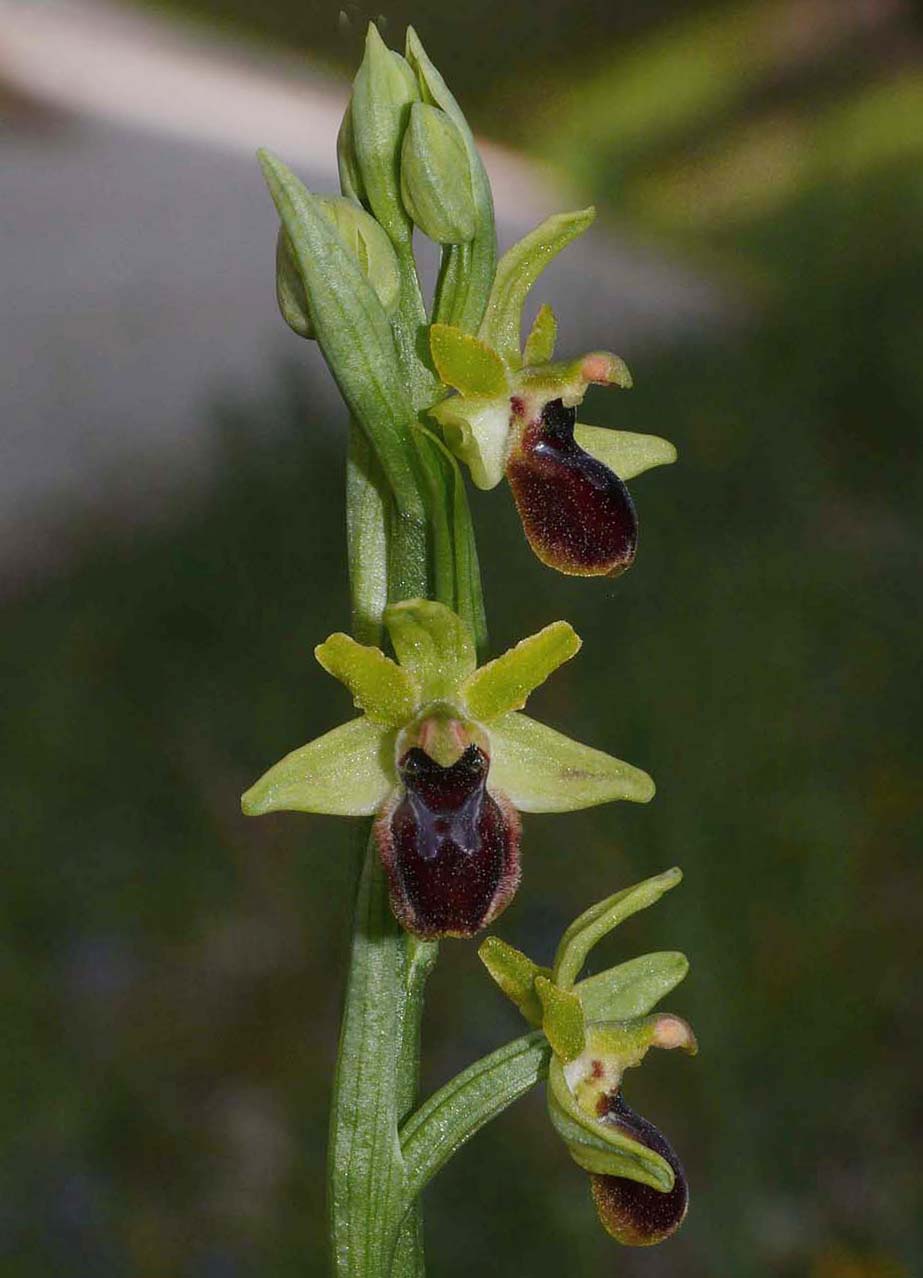

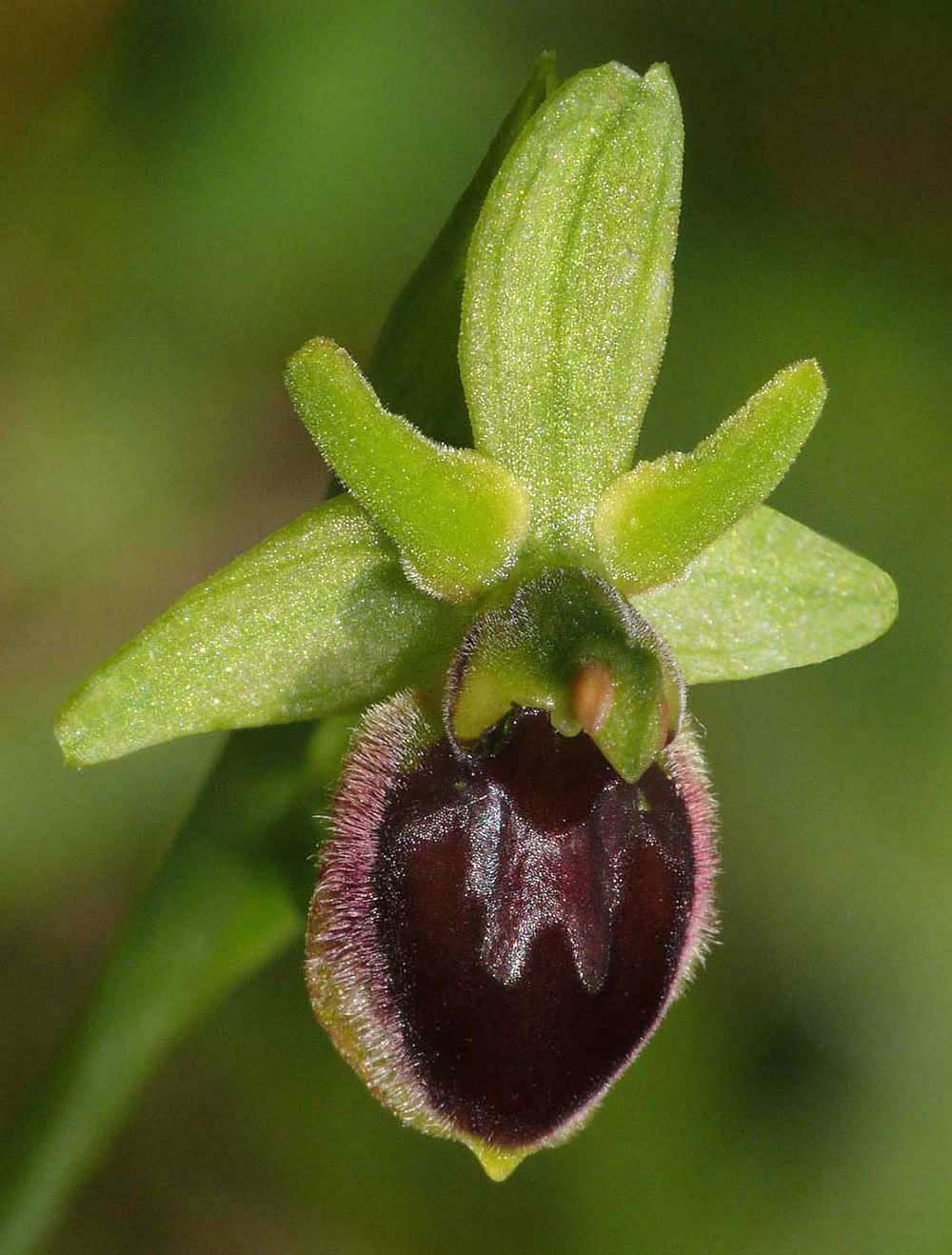
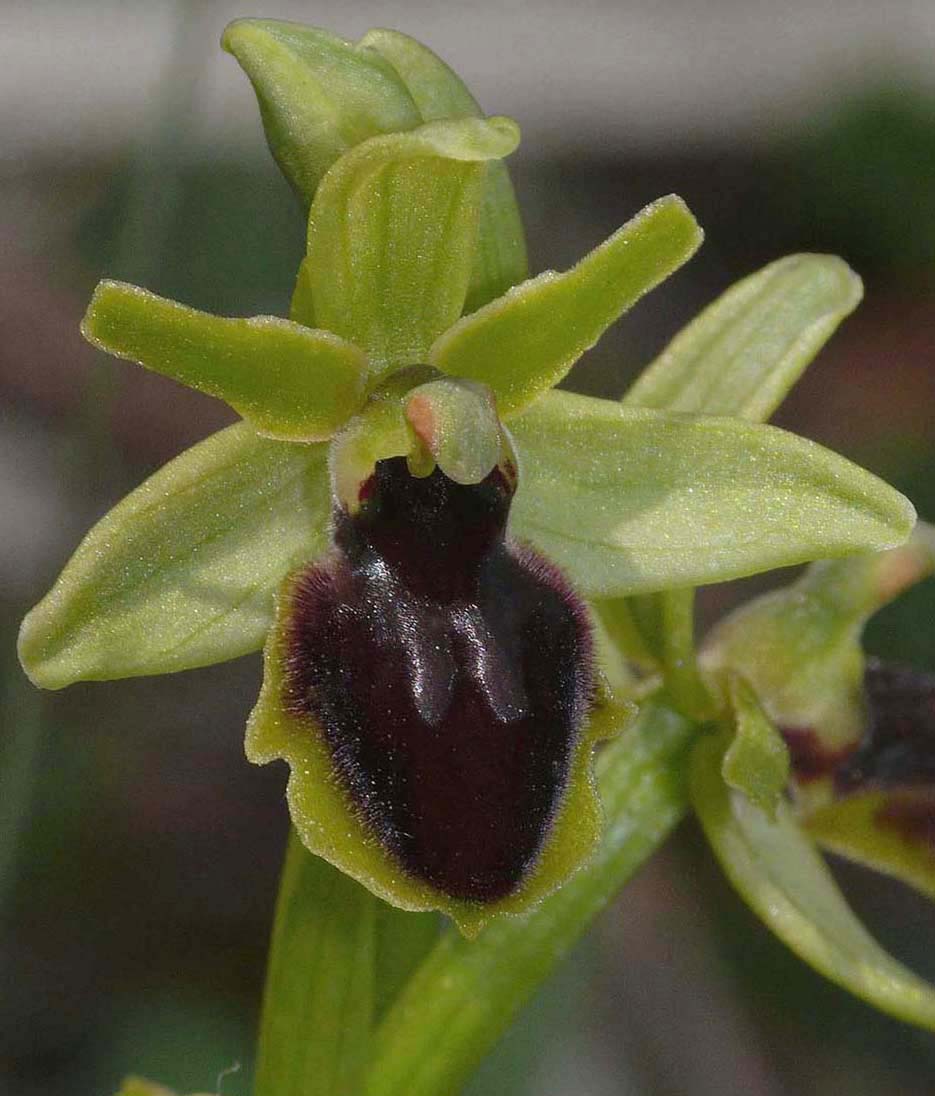
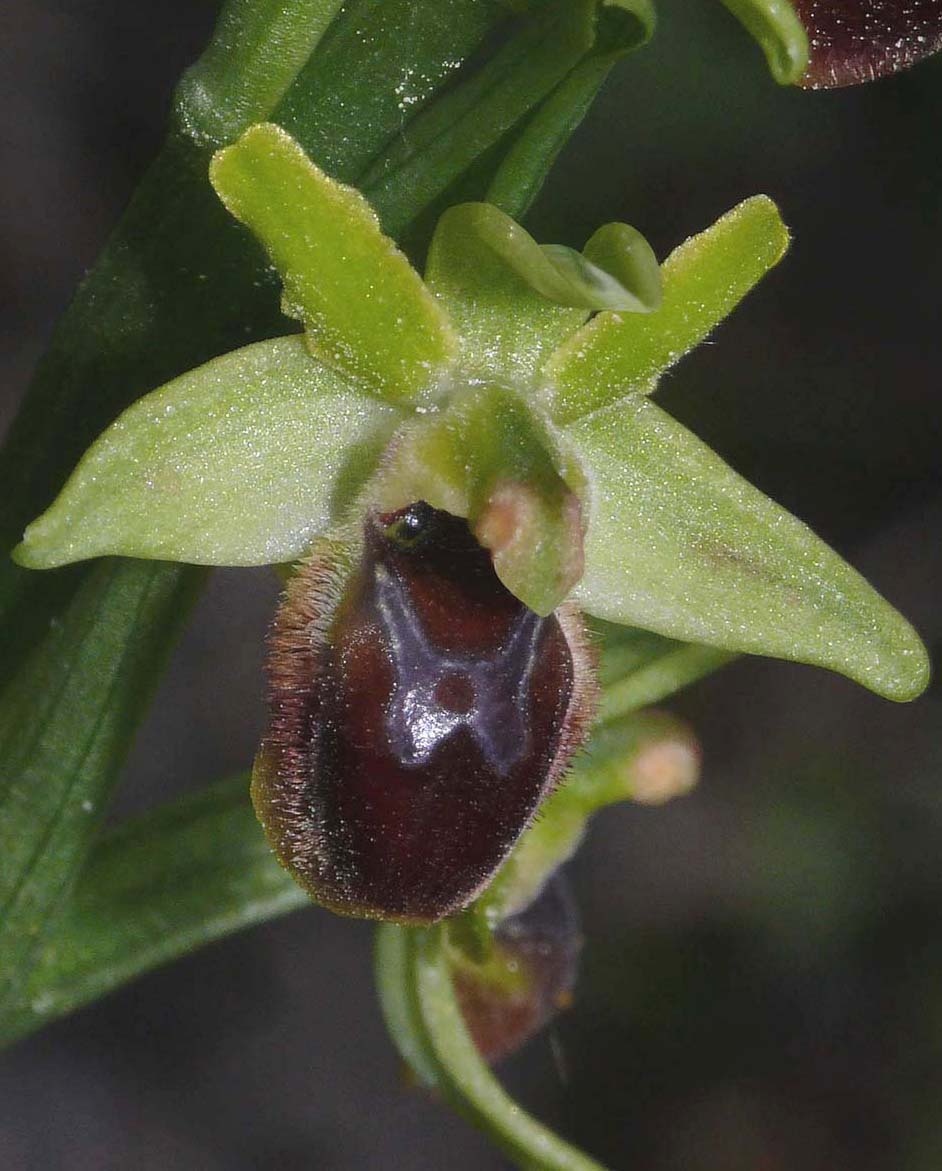
The following three pictures feature unusual O. araneola flowers. The first and third are of hypochromatic specimens whilst the second depicts the result of a most unlikely hybridization with O. fuciflora.
